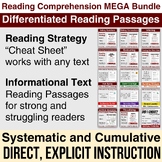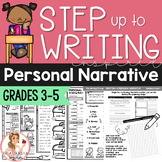10 results
Writing-expository Common Core L.9-10.2a resources
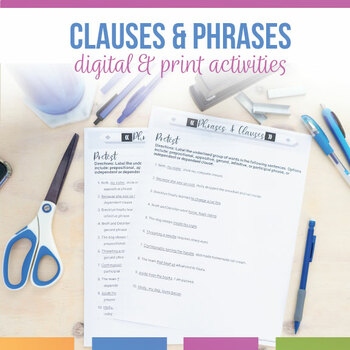
Phrases and Clauses Grammar Worksheets, Presentation, Test, Flipping Book
Phrases and clauses can look similar, and my students confuse them. I made these phrase and clause activities to clarify the differences in these units of words. If your students struggle to identify subjects and verbs, sentence structure, or punctuate phrases and clauses correctly, these grammar activities should help. This grammar bundle is in print and digital formats. Overall, these activities to clarify phrases and clauses are great grammar scaffolding tools.This phrase and clause bundle in
Grades:
7th - 10th, Adult Education
Also included in: Seventh Grade Grammar Bundle | Sentence Structure, Phrases, Clauses
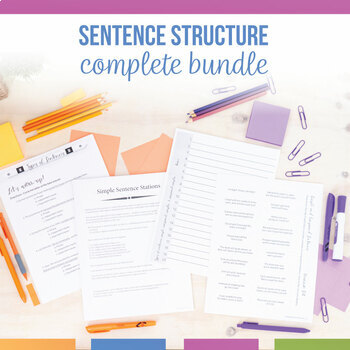
Sentence Structure Activities Bundle | Simple, Compound, Complex Sentences
Are you a middle school language arts teacher looking for exciting and engaging ways to teach sentence structure? Look no further than the sentence structure activities bundle! With this bundle, you'll get an array of hands-on activities that will make teaching simple, compound, complex, and compound-complex sentences fun and efficient. This bundle has a variety of tools to keep your students engaged as they learn about simple sentences, compound sentences, complex sentences, and compound-comple
Grades:
7th - 10th
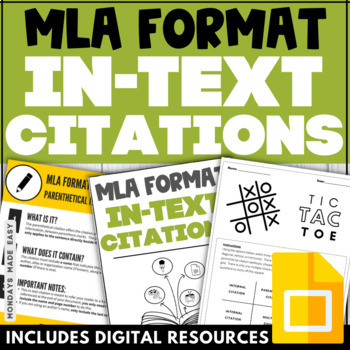
In-Text Citations Worksheets and Activities - MLA 9 - How to Write Citations
Updated for MLA 9th Edition! Teach students how to write in-text citations using MLA 9 with these scaffolding worksheets and activities. Includes anchor charts with in-text citation examples! Suitable for online learning with digital worksheets for Google Classroom®.Included with these In-Text Citations Worksheets for MLA 9:✏️ “Skeleton of a Citation” Reference Poster with MLA Citation Examples✏️ Anchor charts for Parenthetical and Narrative In-Text Citations✏️ Multiple-Choice Questions: For
Grades:
7th - 12th
Types:

Writing Journalism Self Editing Self Check Handout {Editable}
Journalism Writing Self-Editing/Self-Check Handout for Students - offered in Microsoft Word so you can customize it!
Do you have time to edit students' rough drafts? Isn't reading & grading final drafts time consuming enough? Do math teachers pre-grade homework & tests, turn them back to the student so the student can make corrections, then read & grade them all over again? Sounds ridiculous, doesn't it!?
That's why I'm a firm believer in self-checking and self-editing, as well
Grades:
7th - 12th
Types:
Also included in: Writing Resources Bundle Argument Expository Narrative Journalism

Citing Text Evidence Posters MLA Format Sentence Starters | Argument
Principals often appreciate when teachers post sentence frames to guide student writing. :) I post these every year. Help students cite textual evidence using these sophisticated flex frames posters. Great for argument, debate, research, and reports in English, social studies, and science. Also create table toppers for easy student access. Build your writers' toolbox! Follow me for more teacher and tutor tools. Happy teaching! Get your weekends back.For the Google Slides, scroll to the end of th
Grades:
6th - 10th
Types:
Also included in: Citing Evidence Posters, Argument Essay Template, & Transitions Bundle
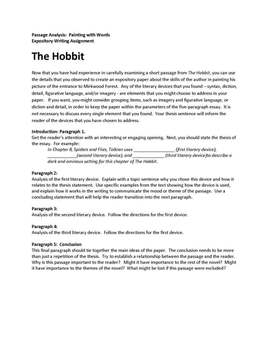
The Hobbit: Passage Analysis and Expostiory Writing
Like any good writer, J.R.R.Tolkien is a master of using literary devices to “paint” the reader a picture of the ancient and dangerous Mirkwood Forest. The dangers of the forest are foreshadowed when the narrator says, “Now began the most dangerous part of all the journey.” Since our adventurers have encountered stone giants in the mountains, the goblin attack and escape through their tunnels, and the Wargs trapping them in the trees, it has to give the reader pause to be told that these were
Grades:
7th - 10th
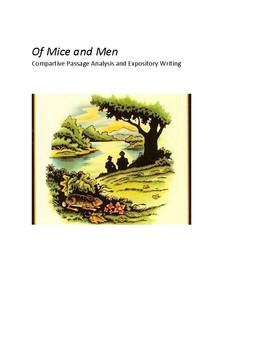
Of Mice and Men: Comparative Passage Analysis and Expository Writing
Chapter 1 and Chapter 6 in Steinbeck’s novel Of Mice and Men are close reflections of one another. Once students have read the book, they need to do a close reading of prepared excerpts from the two passages. The use of various types of imagery and figurative language choices make these seemingly simple passages come alive. A chart is included that requires students to find twelve different types of literary devices. Because these chapters are the beginning and the ending of the book, it is a
Grades:
9th - 12th
Types:

Exposition Composition unit
This comprehensive composition unit focuses on exposition - the synthesis and analysis of informatory texts. The unit includes a instructional PDF powerpoint demonstrating the primary components of expository writing, several graphic organizers for research and writing, and an original outline and essay for analysis. This expository unit is cross-curricular interweaving writing and research skills, with a scientific essay. The skills developed from this unit are transferrable throughout the c
Grades:
7th - 12th, Higher Education, Adult Education

3.1- Combining Clauses
This lesson provides a review/overview on sentence structure by focusing on correctly combining clauses. The lesson reviews compound, complex, and compound complex sentences structures. Teachers can elicit evidence and gauge student understanding through the practice problems. Students will prove mastery through quizzes and then apply their understanding of punctuating clauses by incorporating them into an assigned writing prompt.
Grades:
7th - 10th
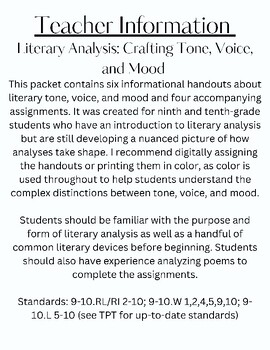
Literary Analysis: Crafting Tone, Mood, and Voice
This packet contains six informational handouts about literary tone, voice, and mood and four accompanying assignments. It was created for ninth and tenth-grade students who have an introduction to literary analysis but are still developing a nuanced picture of how analyses take shape. I recommend digitally assigning the handouts or printing them in color, as color is used throughout to help students understand the complex distinctions between tone, voice, and mood.Students should be familiar wi
Subjects:
Grades:
8th - 11th
Types:
Showing 1-10 of 10 results

